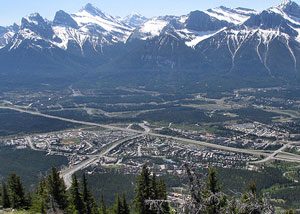MSW Case Study
 Nestled in a far corner of the state, the town’s economy relied on ranching and outdoor activity. As a result, they committed to the environment and recycling early. Three local haulers collected and transported recyclable single stream material 180 miles to sorting facilities in the closest large town for $58 per ton plus processing fees. Worse, roughly 30% of the recovered material was not recyclable and ended up in distant landfills.
Nestled in a far corner of the state, the town’s economy relied on ranching and outdoor activity. As a result, they committed to the environment and recycling early. Three local haulers collected and transported recyclable single stream material 180 miles to sorting facilities in the closest large town for $58 per ton plus processing fees. Worse, roughly 30% of the recovered material was not recyclable and ended up in distant landfills.
In 2016, an integrated environmental services firm built a $550,000 sorting facility (net of building and property) at the landfill. The facility included a Revolution© sorting system, a ferrous metal separator, two vertical balers, a horizontal baler, a pit, 14 collection bins and a feed conveyor.
Service and Recovery:
The facility serves 80% of the community’s 4500 households. The diversion rate is around 40% with 25% of processed material unrecoverable. This results in an overall 30% system diversion. Community awareness and education will increase this yield over time. This level of diversion will extend the life of the current cell at the landfill 30% pushing out the need for expansion and reducing the landfill’s accrual for expansion by 30 to 40%.
Cardboard goes directly to a cardboard mill. Regional insulation plants take the paper. The local scrap metal company buys the tin and aluminum. A plastics processor buys the PET and HDPE (natural and colored). The backhauls for road salt in the winter and landscape sand in the summer take glass to a distant processor. There is not a viable solution for #3-7 Plastics at this time, although there is one currently in development.
Operations and Future Improvements:
 The facility opened in June of 2016, beginning a 3-month shakeout and ramp up. The six-man team took time to learn how to operate the system and resolve any machine or operating issues. In August, the facility shipped its first truckload of paper. Experienced operators visited the plant to train the operators and refine operations.
The facility opened in June of 2016, beginning a 3-month shakeout and ramp up. The six-man team took time to learn how to operate the system and resolve any machine or operating issues. In August, the facility shipped its first truckload of paper. Experienced operators visited the plant to train the operators and refine operations.
By September, operations had stabilized near target levels. Other haulers were allowed to drop off recyclables for a processing fee approximately equal to the cost of trucking to town. As a result, it was cheaper and easier to drop off material locally without having to manage the additional logistics of transportation.
Improvements in October and November allowed the facility to sustain its design processing rate and increase its reach by bringing on new customers.
Conclusion
Faced with increasing landfill costs, rural communities can rely on systems in larger communities or create their own system. Transportation of all or part of the waste stream is expensive. Although processing costs for smaller systems can be higher than processing costs for larger systems, the total cost after transportation is competitive. This can create the basis for a local system that creates local jobs and reduces landfill expenses instead of increasing the burden on the community.
To read the full case study follow the link below:
